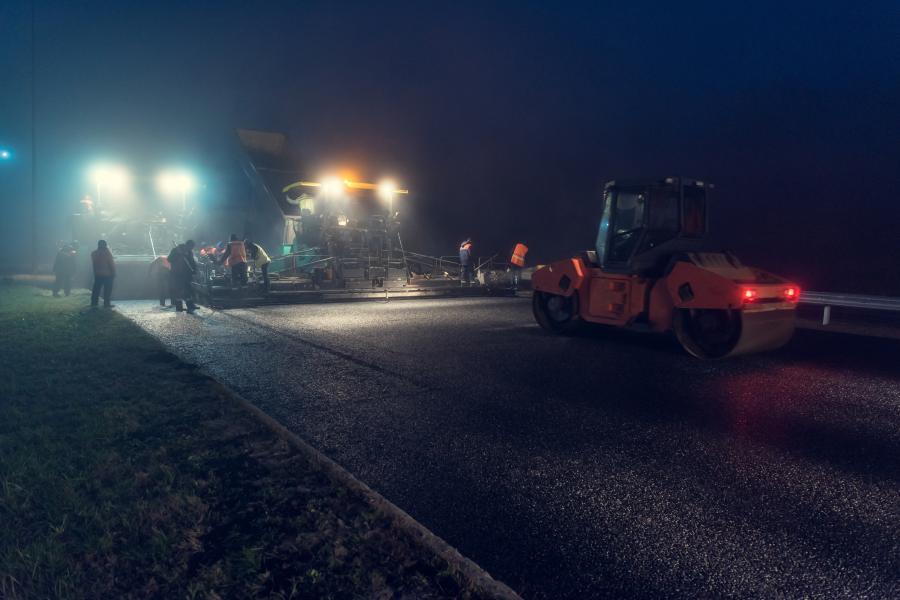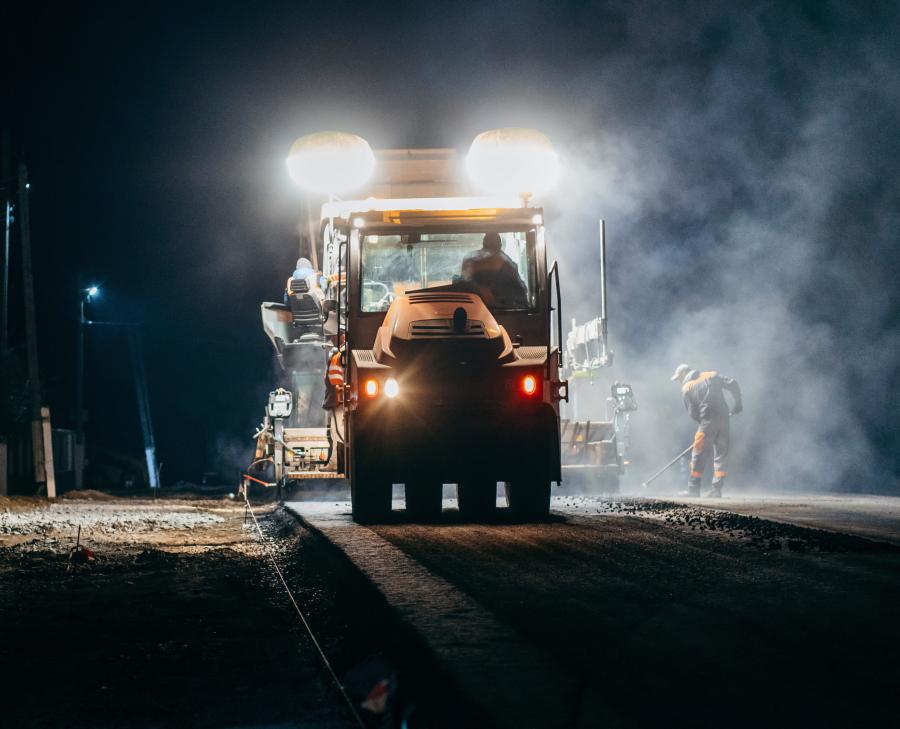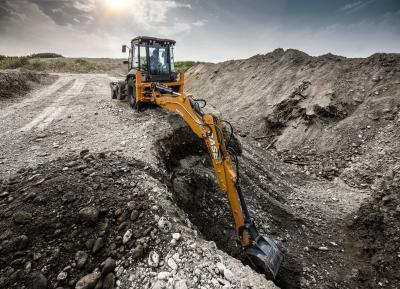Having lighting that is properly designed, installed, operated and maintained keeps construction workers alert, helps them make the best decisions in the moment and improves morale as the result of a more pleasant and comfortable work environment.
Optimal lighting is crucial to a hazard-free and efficient construction site. The right lighting not only keeps workers safe, but it can streamline workflow, which saves on construction cost and time. In planning for the proper lighting of a job site, the best place to start is an assessment of your working conditions to set a baseline. From there you can build a lighting usage and maintenance plan.
You also should consider adding floodlights or task lighting to improve visibility in specific zones, said surveillance system provider Mobile Video Guard. And you should think about access to natural lighting wherever possible, said the Bowie, Md., company, as it can help cut electricity usage and costs.
"Overall, being proactive and regularly assessing the lighting situation on your construction site can ensure optimal conditions," the company added.
Shedding Light On Safety
Better lighting improves safety conditions on the job site by reducing the possibility of slips, trips and falls, for starters.
Optimal visibility through proper lighting keeps employees productive and safe in performing their duties.
According to Mobile Video Guard, the right light technology also can promote on-time and in-budget project completion.
All this "while still ensuring that construction sites meet safety requirements and operate at maximum efficiency," said the company.
And having lighting that is properly designed, installed, operated and maintained helps workers to make the right decisions more quickly with reduced risks.
"Improved lighting also increases worker morale by making the workplace environment more pleasant and comfortable," said Mobile Video Guard.
OSHA requires that all employees who work during nighttime shifts have adequate lighting for the job they are performing. In fact, OSHA standard 29 CFR contains the minimum requirements on lighting, according to video security system provider Stealth Monitoring.
Stealth writes that OSHA also considers standards and recommendations from other agencies such as American National Standards Institute (ANSI). The original practice for industrial lighting from ANSI standard A11.1-1965, R1970 contains recommended values of illumination.
OSHA recommends that employers use this standard to determine sufficient lighting required to provide for the safety and health of employees in workplaces.
"OSHA standard 1926.56(a) only provides minimum illumination requirements for a construction site," according to Stealth. "Your construction site might also have more stringent occupational safety requirements for exterior lighting."
The security system company urges contractors to also know the regulations for their particular state as well as those of the state they're working in.
In addition to ANSI, the National Fire Protection Agency (NFPA) has established lighting standards that apply to construction. NFPA standards address issues from potential sources of hazardous materials to environmental regulations, noted Mobile Video Guard.
"These include addressing the need for the proper placement and installation of lighting equipment."
The NFPA also helps ensure the best possible design and use of lighting products to reduce risk of injury resulting from darkness or shadows.
Brighter Lighting Strategies
Traditional incandescent bulbs are still common on job sites because of their affordability and easy installation.
"The warm glow of an incandescent bulb can be attractive, but they don't always provide the best light for construction," according to Mobile Video Guard.
They must be used in conjunction with other lighting sources to achieve a higher light output and optimal lighting conditions.
"LED lighting has become a must-have for construction sites, providing a range of benefits that are almost too good to pass up," said the company. "With LED lights, you can reduce energy costs and gain excellent levels of illumination."
They are more resistant to vibration and breakage because they are built around solid-state technology.
"That makes LED lighting ideal for construction sites, where harsh conditions can test the limits of traditional lighting fixtures."
And with their long lifespan, maintenance staff won't be replacing them often, so all the areas of the construction site can be properly lit for longer periods.
"LEDs also provide bright white light directly to the work area, which significantly enhances visibility," said the company.
Lighting placement on construction sites must be carefully planned to achieve optimal conditions for working safely and effectively. Lighting should cover all areas, said the security consultant, including all spots where workers will be present and where materials and equipment are stored.
"It's also important to ensure that there are no shadows where workers may be directly exposed, as this can be a safety hazard."
And lighting should be placed optimally to minimize glare in order to reduce any discomfort for workers.
"Poorly placed lighting can result in a lower level of productivity due to decreased visibility and strain on the eyes."
Plus placement must be properly and precisely choreographed to meet all safety and productivity requirements.
Natural sunlight can be a cost-effective way maximize lighting while minimizing energy costs, noted Mobile Video Guard.
Many contractors find the cost of installing and running electrical lighting is a significant chunk of the operating budget.
"On suitably sunny days, natural light can help to reduce glare and create the optimal lighting environment for construction workers," said the security consultant.
To maximize natural light's benefits, install large sections of glazing and use white reflective surfaces to encourage light reflection, they suggested.
"It is also important to pay attention to the sun's path and the effects of shading." Lighting placement should be adjusted throughout the workday.
Mobile Video Guard believes that one often underestimated tool in achieving optimal lighting conditions is the use of reflectors.
"By strategically placing reflectors around the worksite, the amount of available light can be vastly increased," said the company.
The increased light will cast away unwanted shadows at certain areas while providing lighting to a previously invisible space in others.
"Reflectors can be especially beneficial when working on a tight budget or with limited sources of power," said the company. "Furthermore, reflectors are easy to set up and cost-effective, making them a great option for any construction site."
To achieve optimal lighting, the type of lights needed should be determined based on the requirements for different tasks and materials being used.
The lights should be strategically placed to maximize light coverage and to reduce shadows and dark areas, according to Mobile Video Guard.
Lights also should be adjustable in both intensity and height, depending on the changes in the work site. They should be long-lasting, resistant to shock and weather conditions and require minimal maintenance.
Traffic Safety Warehouse says a construction zone lighting plan starts with the understanding that its development is a process that will take some time.
"There are a lot of environmental factors for you to consider," said the online safety store.
- Draw Out the Project Area
Carefully assess and draw out the designated work zone, creating a detailed, scaled image of the entire site to note where you'll need to place certain things.
"Make sure that you're marking the locations of all workers, machinery, and even your traffic control equipment," said the company.
Get as clear of a picture as possible so to most effectively arrange lights. Section off zones by station and shade out places with possible obstructions.
"This blueprint will provide you with an idea of what areas might need a bit more light than others."
- Determine Required Level of Light
According to Traffic Safety, there are three main levels of lighting to consider, depending on your circumstances. Level I is the type of illumination necessary for all general working tasks — setup, takedown and moving between locations. Level II is a bit brighter, effective in areas near large, moving construction equipment. Level III is the highest illumination for those in road construction, essential in regions undergoing intricate repairs and utilizing very powerful equipment.
"These areas must have an average light radius of 20 foot-candles, while Level II and I zones must register at only 10 or 5 foot-candles," said Traffic Safety.
Once you have light levels planned for your job site you can move on to choosing the lighting technology you'll use. Some lighting devices may make a better fit than others depending on the task, so be aware of all options to make the most informed decision.
Traffic safety lists four main kinds of lighting setups — portable light plant towers, balloon lighting, roadway luminaries and equipment lights. Because towers and illuminates allow you to mount additional lighting to them, they're great for creating a wide radius of illumination. They're also ideal for providing more directed light downward when necessary.
Balloon lighting also generates a larger area of evenly distributed light but works best when mounted to slow-moving equipment, perfect for Level II regions.
"On the other hand, equipment lights are smaller in size and fastened to signs and barricades," said Traffic Safety Warehouse. "They're better for providing focused light along a smaller area and directing traffic safely through the construction zone."
Field testing is crucial to ensure lighting equipment provides the right amount of coverage for your needs.
"In fact, failing to perform this initial trial can even leave your team without light in one of the most critical zones," said the company. CEG
Today's top stories






















